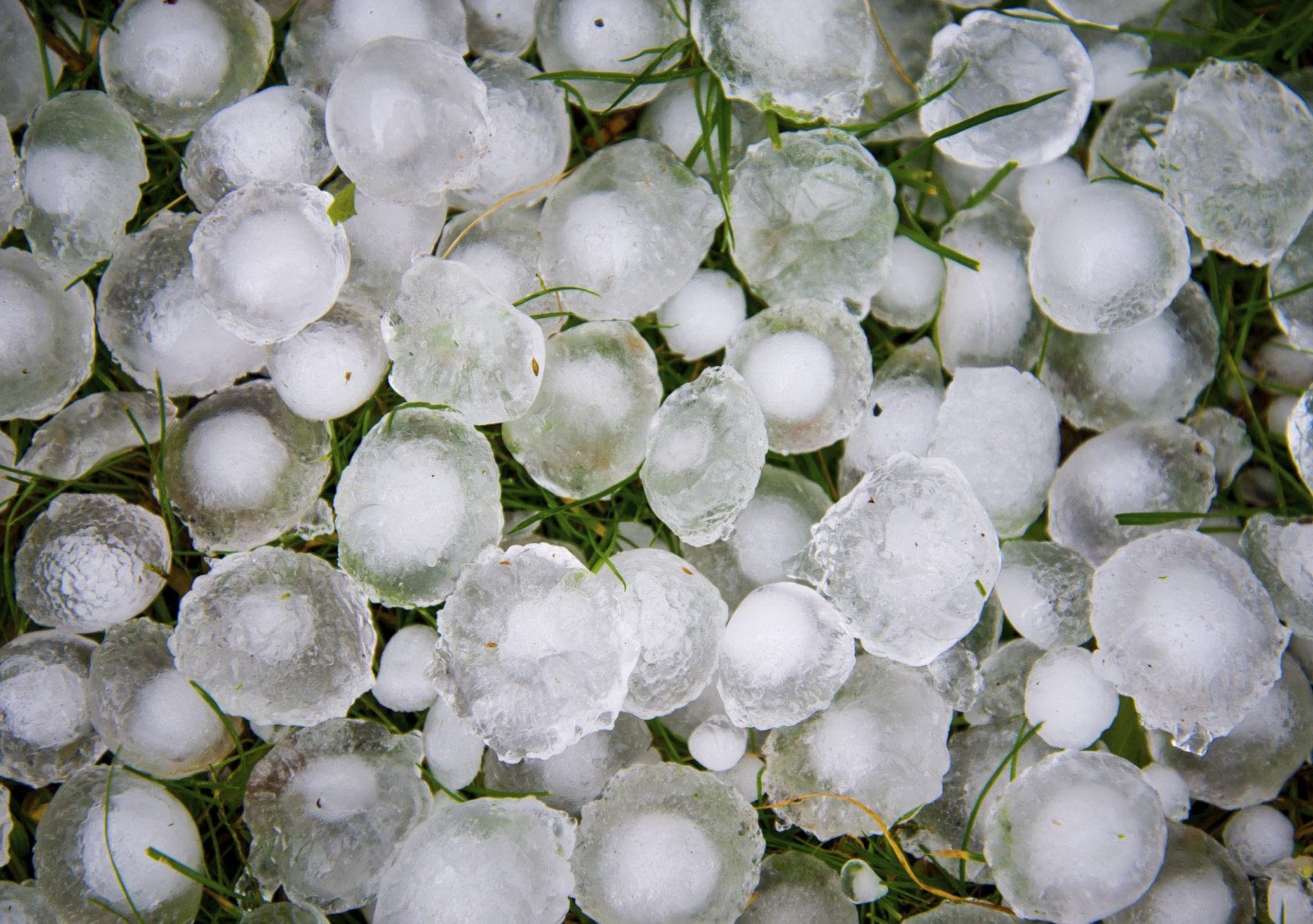

You may not immediately think of hail as a danger to your car or home, but large hailstones can shred roof coverings, dent house siding, scar automotive finishes and lead to water damage. In fact, research from the Insurance Institute for Business and Home Safety (IBHS) indicates that more than 75 percent of U.S. cities will experience at least one hailstorm each year.
Fortunately, there are steps you can take to potentially reduce losses and associated property ownership costs brought on by hailstorms.
Before Hail Occurs
Before the hailstorm, you should:
- Review your homeowner’s insurance policy with your Agent to make sure you have sufficient coverage.
- Create a disaster preparedness plan that outlines the steps you and your family should take in the event of a hailstorm. Also, have an emergency survival kit on hand in case hail damages your roof, automobile or electrical service.
- Make sure your roof can stand up to the impact of hail. When building or re-roofing, especially in hail-prone regions, IBHS recommends using roofing products that have a Class 3 or 4 rating under the Underwriters Laboratories (UL) 2218 standard. The UL 2218 standard tests and rates a roof covering’s resistance to free-falling hailstones. Roof coverings that show the most resistance earn a Class 4 rating; and ones that have the least earn a Class 1 rating. (Keep in mind that while the UL 2218 standard is the best method to test impact resistance, it isn’t perfect and works better for some coverings than for others.)
- Ask your builder, roofer or insurance agent about which materials to use and what additional steps you can take to help your roof covering better stand up against hail and high wind. To cover all bases, you may also want to check your roofing materials for wind-resistant features and a fire-resistance rating.
- Make sure you are up-to-date with any needed roof repairs such as replacing worn, damaged or missing shingles.
During a Hailstorm
If a hailstorm is expected in your area, you should:
- Move inside immediately and stay there.
- Park vehicles in a garage or under a carport.
- Keep away from skylights, doors and windows in case hail shatters the glass.
- Close your drapes, blinds or window shades to prevent wind from blowing broken glass inside.
- If you’re in a car, safely pull off the road, preferably under a bridge or highway overpass. If possible, turn away from or shield yourself from windows and glass as you wait for the storm to pass.
After a Hailstorm
After the hailstorm, you should:
- Be careful of broken glass that may have shattered during a hailstorm.
- If your property is damaged, report it to your ERIE Agent immediately, and make temporary repairs to prevent further damage. You can also file your claim online.
- Beware of contractor fraud. Most contractors are reputable business people, but the dishonest ones may try to convince you that you have hail or other damage and need a new roof, even if your roof did not experience any damage at all.
For more information on creating a family emergency plan, go to ready.gov. To review your insurance coverage, contact you local ERIE Agent at Pardridge Insurance in Sycamore – 815-758-4447.
original post – June 17, 2013

